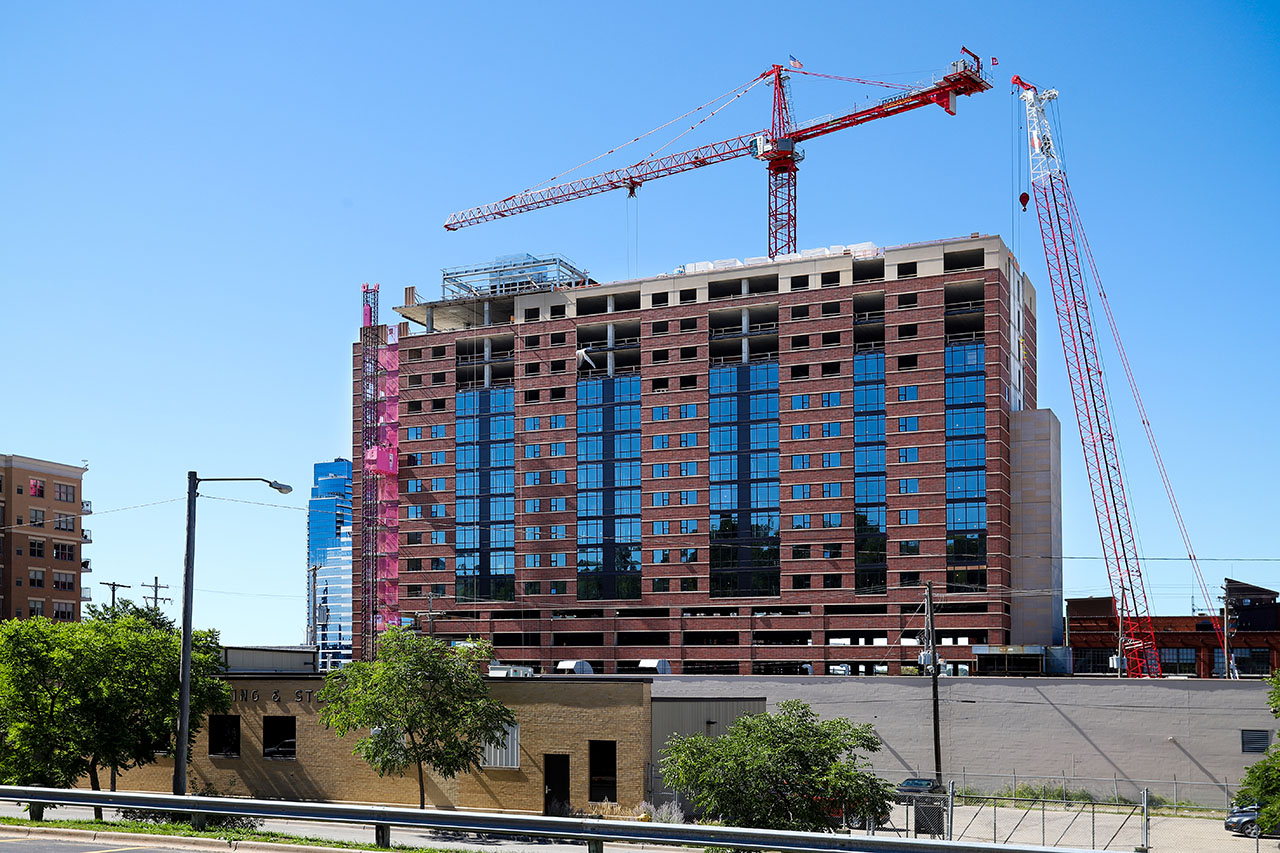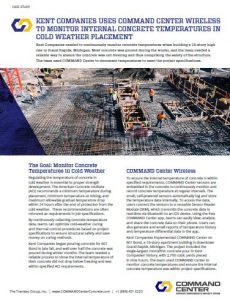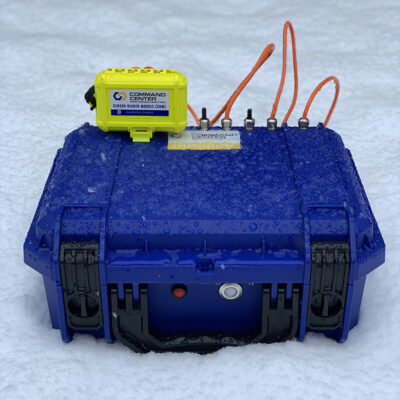Kent Companies needed to continuously monitor concrete temperatures when building a 16-story high rise in Grand Rapids, Michigan. Most concrete was placed during the winter, and the team needed a reliable way to ensure the concrete was not freezing and thus compromising the safety of the structure. The team used COMMAND Center™ to document temperatures to meet the project specifications.
The Goal: Monitor Concrete Temperatures in Cold Weather
Regulating the temperature of concrete in cold weather is essential to proper strength development. The American Concrete Institute (ACI) recommends a minimum temperature during placement, minimum temperature at mixing, and maximum allowable gradual temperature drop within 24 hours after the end of protection from the cold weather. These recommendations are often mirrored as requirements in job specifications.
By continuously collecting concrete temperature data, teams can optimize cold-weather curing and thermal control procedures based on project specifications to ensure structural safety and save money on curing methods.
Kent Companies began pouring concrete for 601 Bond in late fall, and well over half the concrete was placed during winter months. The team needed a reliable process to show the internal temperature of their concrete did not drop below freezing and was within specified ACI requirements.
COMMAND Center™ Wireless
To ensure the internal temperature of concrete is within specified requirements, COMMAND Center™ Sensors are embedded in the concrete to continuously monitor and record concrete temperature at regular intervals. The small, self-powered sensors automatically log and store the temperature data internally. To access the data, users connect the sensors to a reusable Sensor Reader Module (SRM), which transmits the concrete data in real-time via Bluetooth to an iOS device. Using the free COMMAND Center™ app, teams can easily view, analyze, and share the concrete data on their phone. Users can also generate and email reports of temperature history and temperature differential data in the app.
Kent Companies implemented COMMAND Center™ on 601 Bond, a 16-story apartment building in downtown Grand Rapids, Michigan. The project included the single-largest monolithic concrete pour in Kent Companies’ history, with 2,700 cubic yards placed in nine hours. The team used COMMAND Center™ to monitor concrete temperatures and ensure the internal concrete temperature was within project specifications.
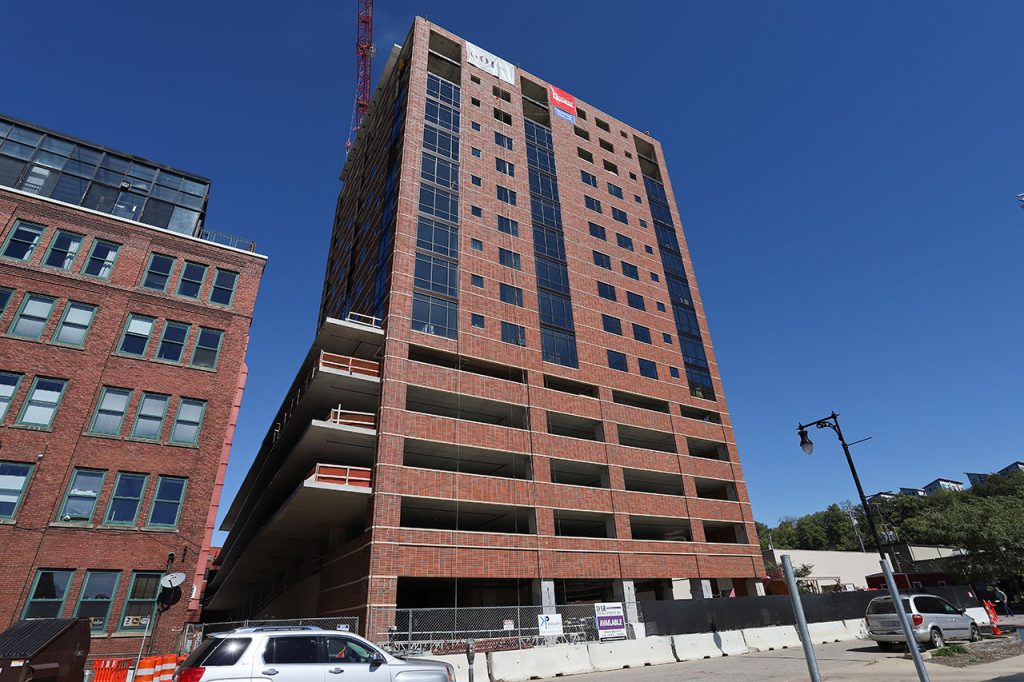
The Result: Reliable Data Using an Easy, Convenient System
Kent Companies used COMMAND Center™ for all concrete floor slabs. The team used six sensors per floor, with most sensors monitoring temperatures near the slab edges which are hardest to heat during the winter. The team used one SRM to transmit data from all the sensors. At just $179 for the reusable SRM and sensors costing $49 each, monitoring temperatures on the project was extremely affordable.
Kent Companies General Superintendent Troy Clinger was responsible for monitoring the sensors. After the sensors are placed in the concrete, they must be introduced into the app and labeled. Clinger said he appreciated the ease of the whole process.
“Introducing the sensors to the app was easy, and it was really simple to label the sensors in the app,” Clinger said. “Once the sensor was programmed in, the app would automatically recognize and read that sensor when you connect it again.”
Clinger said that using COMMAND Center™ on his iPhone made monitoring temperatures on the project extremely convenient.
“I liked having the data sent right to my phone and having the data stored all in one place,” said Clinger. “The SRM and app made monitoring really easy and really convenient.”
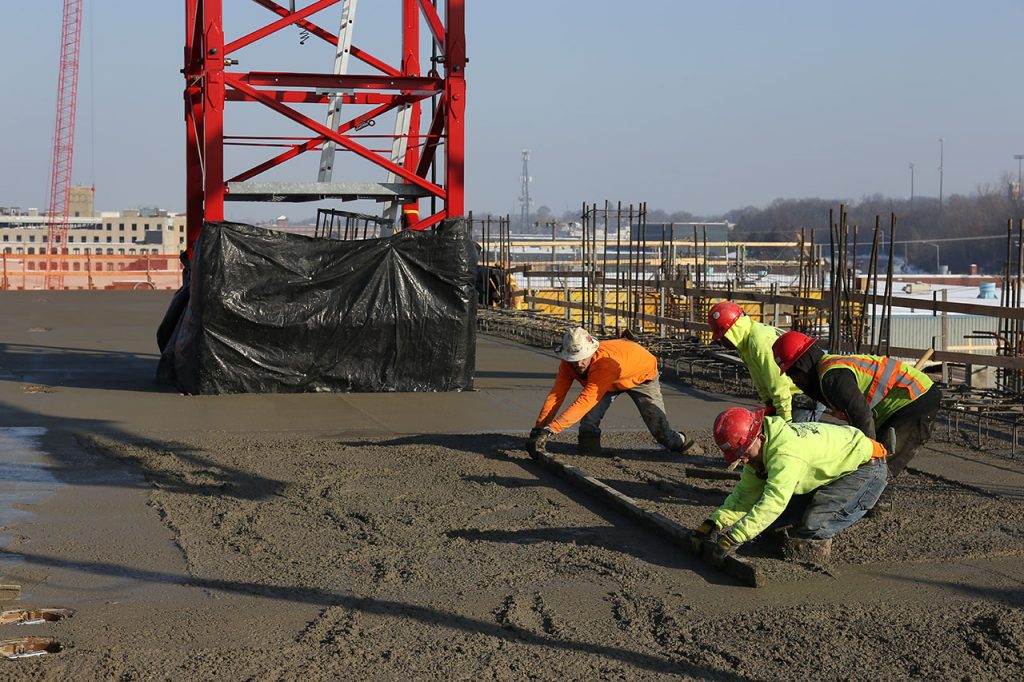
Clinger used the Dropbox integration within the app to store and share the concrete data. At one point during the project, Clinger went on vacation and found the system allowed for an easy temporary hand-off.
“COMMAND Center™ made it really simple to have another colleague check the sensors while I was gone,” Clinger said.
He also enjoys the security of knowing his data is safe and accessible if the team ever needs it in the future.
“COMMAND Center™ saved the history on all the concrete temperature data, so if we ever needed it to prove that we didn’t let our concrete get too cold, we have it,” Clinger said.
In addition to temperature monitoring, the team also used COMMAND Center™ to monitor the in-place concrete maturity and relate this data to the field-cured cylinders.




